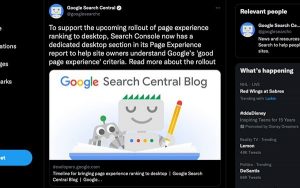As the summer heat burns across the U.S., many retailers are beginning to shift their sights toward cooler weather and the holiday season. However, preparing for holiday shoppers this year comes with an added layer of uncertainty as the COVID-19 pandemic continues on. With concerns over the health and safety of patrons and employees alike, many retailers are grappling with how to manage shopping during the busiest time of year amid a global pandemic.
Many major retailers, like Target and Walmart, have recently shifted their holiday in-store hours by electing to close their doors on Thanksgiving Day. Still, the jury is out on what major in-store shopping days, like Black Friday, will look like this holiday season. While we will still see many consumers take to parking lots ahead of the holidays, it is inevitable that more will turn to online stores to make holiday purchases this year.
So, how can retailers prepare their online sites for more traffic this holiday season? Here are four strategies to keep in mind as businesses prepare.
Personalize the online experience
As consumers sacrifice the in-store shopping experience due to global pandemic concerns, they will have added expectations when it comes to the online experience. Retailers will need to consider how they can bring some aspects of the in-store experience online as consumers expect to have more personalized digital shopping experiences. A 2019 study found that 63% of online shoppers are more open to sharing personal information if it means brands and retailers can better anticipate their needs. For example, many retailers are using AI-based mobile and digital portals to personalize a shopper’s online browsing experience to reflect their current context, previous purchases, and shopping behavior.
Retailers should enable customers to customize everything from product design to packaging, delivery, and customer support to best fit their wants and needs. For ecommerce, customers expect each digital touchpoint to offer the benefits of a store experience; interactions and environments should be personalized to each shopper’s needs, preferences, and style. Retailers should be rethinking how they can support and leverage technologies that can predict, support, and protect their customer’s preferences throughout their entire consumer journey.
Expand selling channels
Consumers have numerous options when it comes to online shopping, so it’s important that retailers meet customers where they are shopping. As such, many retailers have found success through an omnichannel approach to selling, which helps reach more customers where they are shopping. This holiday season, retailers will need to identify which channels make the most sense for their business, whether it be a combination of an ecommerce store, online marketplaces, or social selling.
However, simply opening up shop on multiple channels will not suffice. Retailers will need to ensure that the customer experience is seamless across channels by making sure customers have consistent access to support and a range of payment options. Regardless of which omnichannel selling strategy is being used, retailers will need to pay close attention to the nuances of customer experience across channels to ensure that retailers are not turning away any potential customers due to subpar shopping experiences.
Plan for added tax obligations
Economic nexus laws in the U.S. require remote sellers to pay sales tax based on where the customer is regardless of whether a seller has a physical presence in a state. These new laws have had a material impact on the time and resources required for small businesses to research, prepare, file, and remit sales tax. With each new state that a business must collect and remit sales tax, businesses face the onerous process of manually extracting sales tax calculation data from multiple sales channels, as well as navigating individual state Department of Revenue websites for filing and remittance. With more online sales this season, ensuring that your business has the technology in place to manage expanding compliance obligations will be key to reducing risk.
For businesses that don’t have the processes and technology in place to manage changing sales tax obligations in real-time, a boost in ecommerce sales can make this task extremely time-consuming and costly to manage, while also putting their business at risk for future audits. Fortunately, tax automation technology tracks changing obligations in real-time, allowing businesses to remain compliant without spending hours of time tracking new obligations on their own.
Expect more returns
For consumers, the post-purchase experience is no longer an afterthought, but a crucial component of the customer experience. A key driver to creating an optimal post-purchase experience is a retailer’s ability to quickly and efficiently process returns. For online retailers, an increase in online shopping during the holiday season means more returns. According to a survey by the National Retail Federation done last year, more than half (55%) of holiday shoppers planned to return or exchange any unwanted gifts within a month of receiving them.
Retailers should pay close attention to their supply chains to ensure they not only deliver orders on-time, but also enable easy returns for customers. Companies should look to optimize their fulfillment operation for customer density, streamlining logistics with multiple options, reducing costs associated with customs and brokerage fees, and addressing the headache associated with making returns now, before the influx of online holiday shoppers this year.
The unique combination of the COVID-19 pandemic and the proliferation of e-commerce offers retailers a world of possibility to increase sales and reach more customers this holiday season. While many businesses are focused on continuing to generate sales and serving customers during this uncertain time, they need to make sure they are leveraging the right technologies to make this year’s holiday shopping season frictionless and easy for their customers.
Digital & Social Articles on Business 2 Community
(38)









